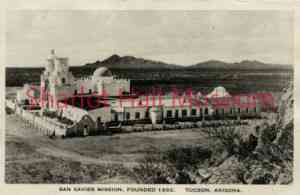By Dave Lewis
Previously: By the late 1700s and into the early 1800s, Spaniards -- explorers, soldiers, priests and settlers -- had criss-crossed Arizona several times. There were permanent Spanish settlements at Tubac and Tucson, nowhere else. Spain had tried and failed to establish a foothold at the critical Colorado River crossing at Yuma. Spanish progress in Arizona seems to have stopped.
Of this period, historian Edwin Corle wrote:
“From the death of Father Garces (1781) up to 1821. . . the history of all of Arizona is meager. It was a land where nothing happened.”
But, oh, the things that were happening elsewhere:
-- In the East, American colonists had recently thrown off English rule. Native-born Mexicans had the same idea about Spanish rule.
-- Spain was at war with Napoleon’s France and was losing its ability to administer its fading empire.
-- Spanish settlements in New Mexico and California were thriving but could not count on support from Mexico or Madrid.
-- Thomas Jefferson bought Louisiana -- a vast area from New Orleans to St. Louis and up the Missouri River more than three-fourths of the way across the continent. Lewis and Clark went to see what was out there and fired the imaginations of the adventurous and the ambitious.
-- The Santa Fe Trail opened commerce between St. Louis and Santa Fe. “Americans,” English and some French began regular interactions with Spaniards and Native Americans. Santa Fe had closer contact with St. Louis than with Mexico City or Veracruz.
 Beginning in 1810, Mexicans began fighting for independence from Spain. A skirmish here, a proclamation there, finally a battle or two, and Mexico won its independence from Spain in 1821. Arizona became part of an independent Mexico.
Beginning in 1810, Mexicans began fighting for independence from Spain. A skirmish here, a proclamation there, finally a battle or two, and Mexico won its independence from Spain in 1821. Arizona became part of an independent Mexico.
Independent, yes; stable, not so much. Mexico had some difficulty setting up a functioning government. Marshall Trimble writes:
“ . . One unstable government after another tried and failed. . . During one 24-hour period, three men held the office of president -- one for only 45 minutes. . .”
This offers some insight into the effectiveness of Mexican administration of its vast territory. Mexico did, at least, organize its lands into governing districts or states. Eventually, Arizona, south of the Gila River, became part of the Mexican state of Sonora.
Historian Jay Waggoner tells of the northern part of Arizona:
 “. . . The forbidding land of rugged mountains and inhospitable Indians north of the Gila was only a place on the map described as ‘Los Yndios Gentiles’ (the heathen Indians). Vaguely claimed by both the Mexican territory of New Mexico and that of California, it was colonized by neither. With practically no civilian rule and little military protection from the unstable, revolution-plagued Mexican government . . . it is little wonder that nobody in Arizona really knew who governed.”
“. . . The forbidding land of rugged mountains and inhospitable Indians north of the Gila was only a place on the map described as ‘Los Yndios Gentiles’ (the heathen Indians). Vaguely claimed by both the Mexican territory of New Mexico and that of California, it was colonized by neither. With practically no civilian rule and little military protection from the unstable, revolution-plagued Mexican government . . . it is little wonder that nobody in Arizona really knew who governed.”
But then, there was nobody north of the Gila who cared.
In this era, alongside the native populations present in Northern Arizona, an interesting group emerged -- men who genuinely did not care who governed; men who cared little for international boundaries. These were the “mountain men.” As their counterparts to the north were pushing up the Missouri River in the wake of Lewis and Clark, others turned their attention to the Southern Rockies and deserts and mountains of the Southwest. With a well-established trail to Santa Fe, and a relatively easy route from there to Zuni, it took very little time for these men to press into Arizona.
Their company included Kit Carson, Ewing Young, James Ohio Pattie, Bill Williams, Francois X. Aubry, and men who figured into the exploration of the Prescott region -- Pauline Weaver and Joseph Walker. Their movement into Arizona was spurred by a quest for mineral riches, beaver pelts and no small measure of curiosity and adventure. Sometimes, they sought a fur trapping license from Mexican governors at Santa Fe, sometimes they just did what they wanted to do, a Mexican “license” being sometimes meaningless.
Marshall Trimble tells a story of Ewing Young, as an illustration:
“During one 1,000 mile expedition into Arizona, Young gathered in some $20,000 in beaver pelts, lost a third of his men in battle and, when he arrived at Santa Fe, Mexican authorities confiscated all his furs claiming his license was void.”
No wonder there are few official records of the mountain men’s exploits. One, James Ohio Pattie, created (possibly “fabricated”) a journal. We will tell his story in Part 8 beginning in August.


